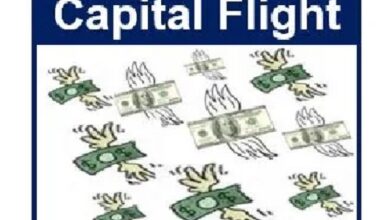What is Drag Queen origin history of drag and Typologies
Drag queen
The meaning of the term drag queen is “A person, often a gay man, who dresses in highly decorated women’s clothing, wig, jewelry, make-up, etc., as a disguise and acts as a woman for entertainment purposes,” is the Cambridge Dictionary definition .
The term drag queen refers to a person who dresses and makes up as a woman, often with the intention of paying homage to the genre and integrating comic, satirical, artistic and/or dramatic intentions.
This art does not seek to imitate a woman, much less mock them, and the person who carries it out must not have a certain sexual orientation. In fact, it is increasingly open to anyone regardless of their gender or sexual orientation, age, ethnicity or any other condition.
The meaning of drag queen and origin of the term
The etymological origin of drag queen has been debated for many years and there are several theories about it.
One of the most popular is that it emerged during the Victorian burlesque era, in the second half of the 19th century during the monarchy of Queen Victoria of the United Kingdom. At that time the word drag (‘drag’ in Spanish) was used to refer to long skirts and dresses worn by some male actors in burlesque shows.
The term drag queen first appeared in print in 1941.
Another theory that, to date, has been the most accepted, is that the word drag originated from a retroacronym: Dressed As a Girl ( dressed as a girl ) or Dressed Resembling A Girl (dressed resembling a girl).
This last theory is only a hypothesis, since just as drag queens exist , there are also drag kings , who are people who dress as men with exaggerated features.
Drag queens are not to be confused with drag queer , transvestite, transgender people, or transsexual people.
Today drag has become a culture of gender expression totally focused on the expression of LGBTIQ+ pride and we can enjoy performances with singing, dancing, stand-up and/or lip sync in theaters, shows, contests and television programs. , the most famous and representative of the movement is RuPaul Drag Race .
Drag queen culture is an art that should be valued all year round, not just the month of June.
Brief history of drag
Drag has a history and tradition that stretches back several decades and, being a collective art, subversive in origin and countercultural, it did not occur in one place or at the same time. Actually drag queens have existed in different cultures and contexts all over the world.
The movement has been documented and there is some agreement on the most important moments that have made this art what it is today.
- Princess Seraphina: In 18th century England, Princess Seraphina was the alias of butcher John Cooper who would go to bars and taverns wearing a white dress and fan. She considers herself the first drag queen in history.
- Variety and Burlesque Theater: In the late 19th and early 20th centuries, burlesque and variety shows featured men dressed as women in comic or dramatic performances. These performances laid the foundation for gender expression and humor associated with drag.
- The Stonewall Riots: In June 1969, the Stonewall riots at the Stonewall Inn bar in New York marked a watershed in the fight for LGBTQ+ rights. Transgender people and drag queens, such as Marsha P. Johnson and Sylvia Rivera, played key roles in resisting police violence, leading to the start of the modern LGBTQ+ rights movement.
- Drag Ball Culture: In the 1970s and 1980s, drag communities began hosting events known as “Drag Balls” in cities like New York. These events provided a safe space for queer and transgender people to express themselves through drag and celebrate their identity.
- The Film “Paris Is Burning”: Released in 1990, this documentary film captured the voguing and drag ball scene in New York City. “Paris Is Burning” helped popularize drag culture and became a benchmark for the LGBTQ+ community and mainstream culture.
- RuPaul’s Drag Race : Since its release in 2009, “RuPaul’s Drag Race” has been an influential television show in drag culture. It has brought drag competition into the global spotlight, promoted diversity and inclusion, and propelled many drag queens to fame and success in the entertainment industry.
Typologies in drag culture
Within the drag culture there are different branches to be identified, especially to classify them within the industry.
- Comedy Queens or queens of comedy: they usually make up and characterize more exaggerated feminine features.
- Pageant Queens or contest queens: they seek to highlight feminine beauty and, in fact, participate in constant drag queen beauty contests .
- Club Kid : in this category they seek to represent the masculine within the feminine, for example beards.
- Dark Queens or dark queens: they have a much more gothic style and some even pretend to generate fear during their show.
- Glamor Queens: These drag queens focus on elegance and glamour. Their style is inspired by Hollywood divas and they tend to use sophisticated and dazzling costumes and makeup.
- Dance Queens: These drag queens are known for their dancing skills. They perform choreographed routines and have a strong focus on physicality and movement.
- Character Queens: These are drag queens who create unique and distinctive characters for their performances. They can play anything from historical figures to fictional characters, and their main focus is on storytelling and acting.
- Political Queens: These drag queens use their art to address political and social issues. Through their performances and messages, they seek to raise awareness and promote change.
These categories are general and many drag queens may belong to more than one or none or invent their own style. There are no rules set in stone in this art.



